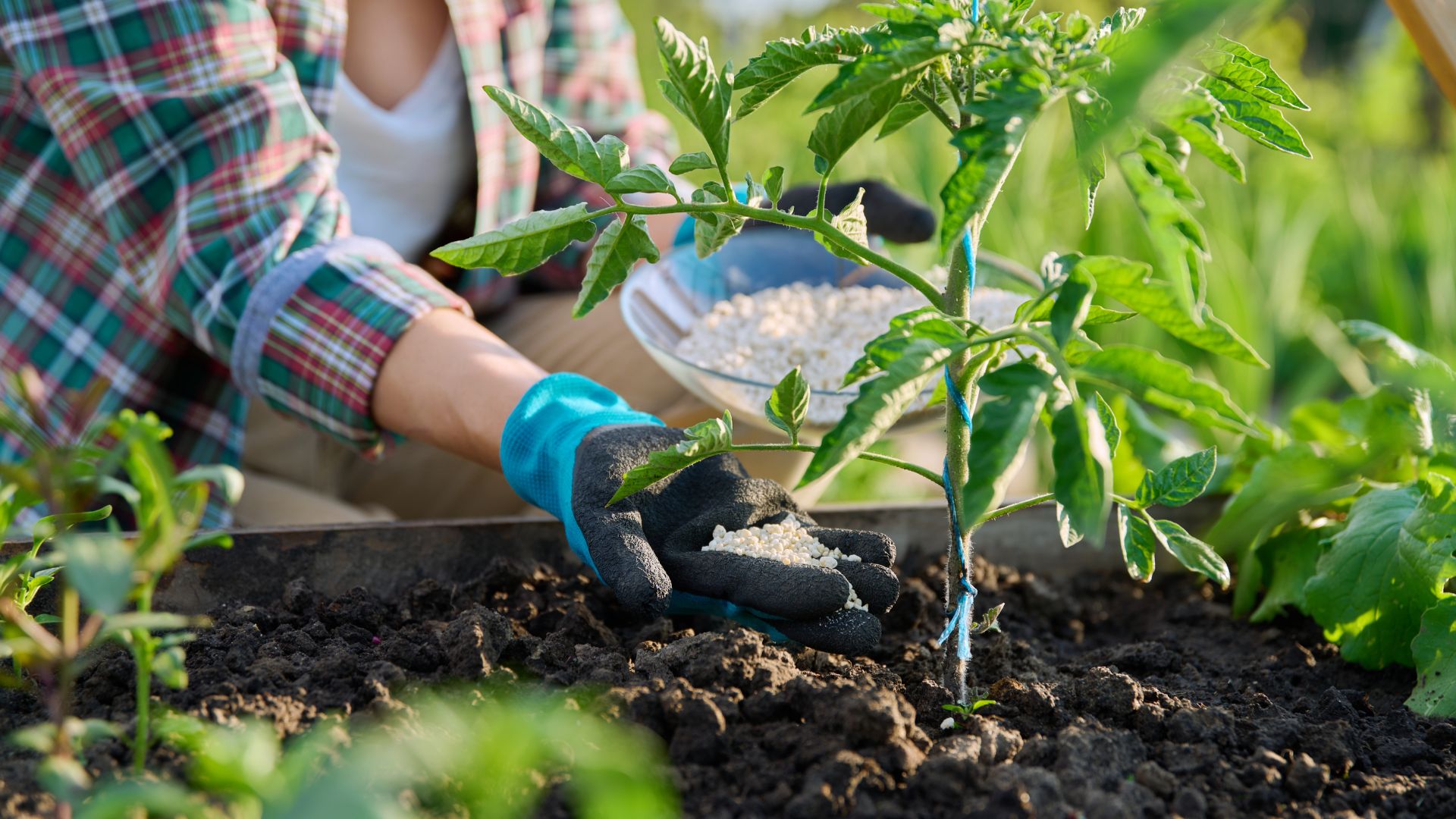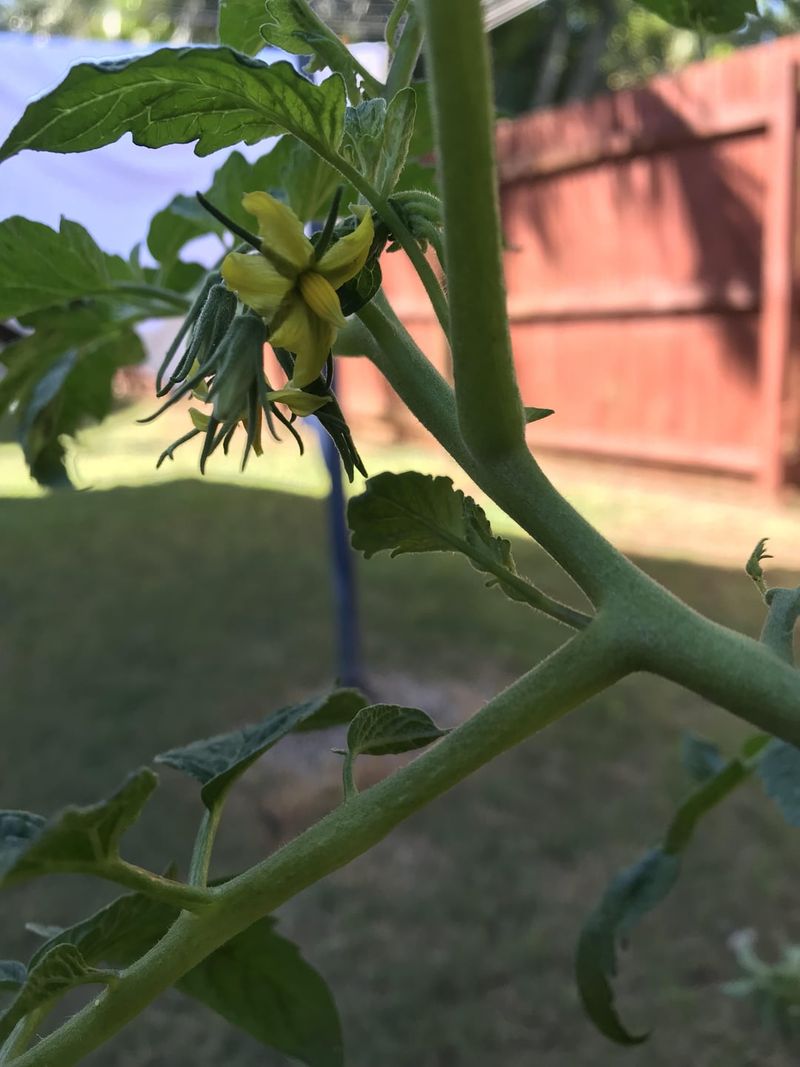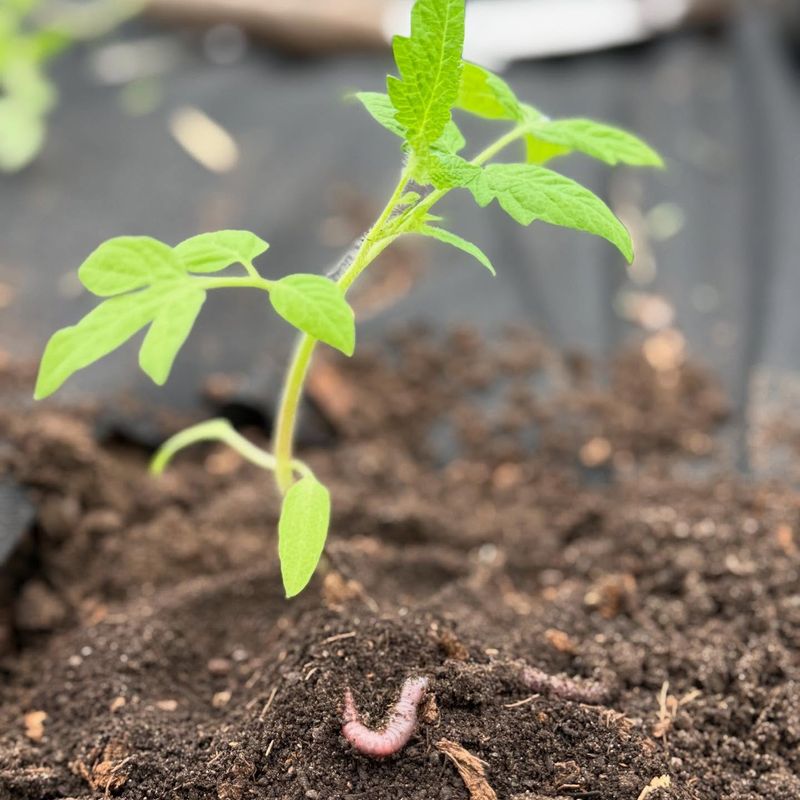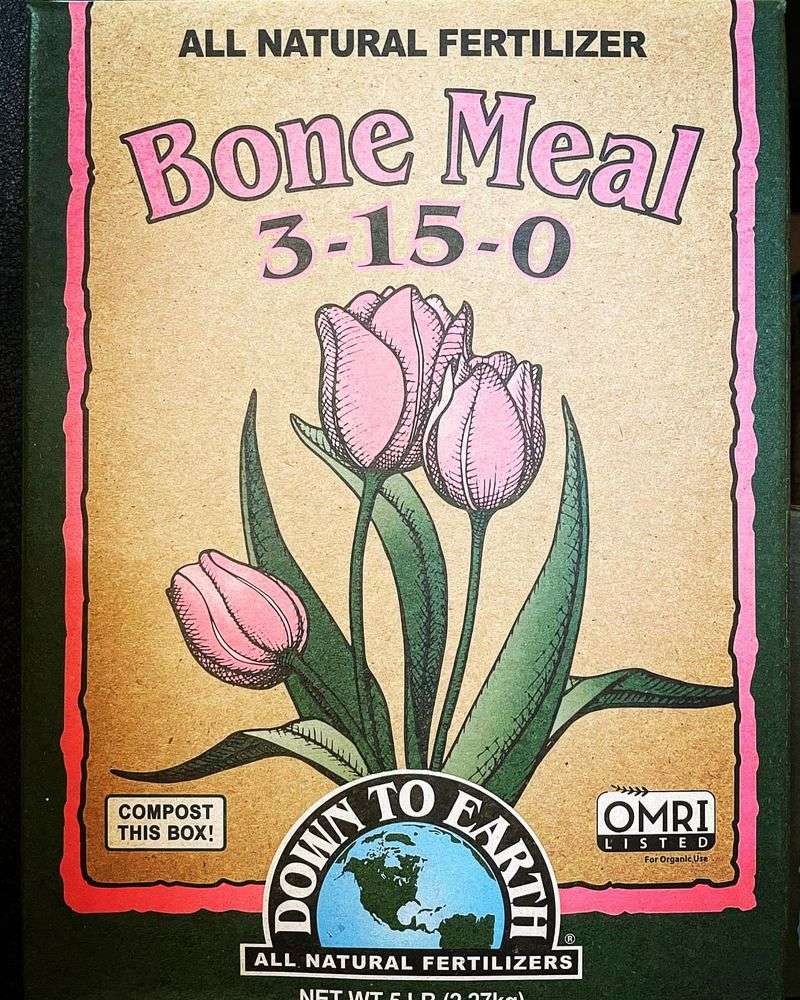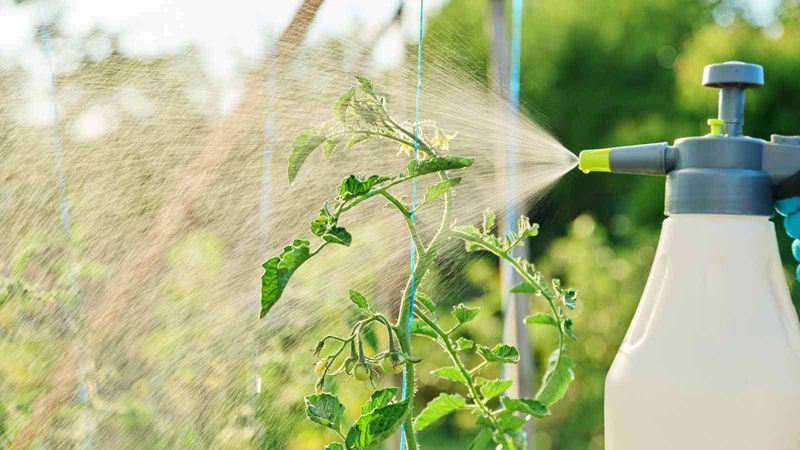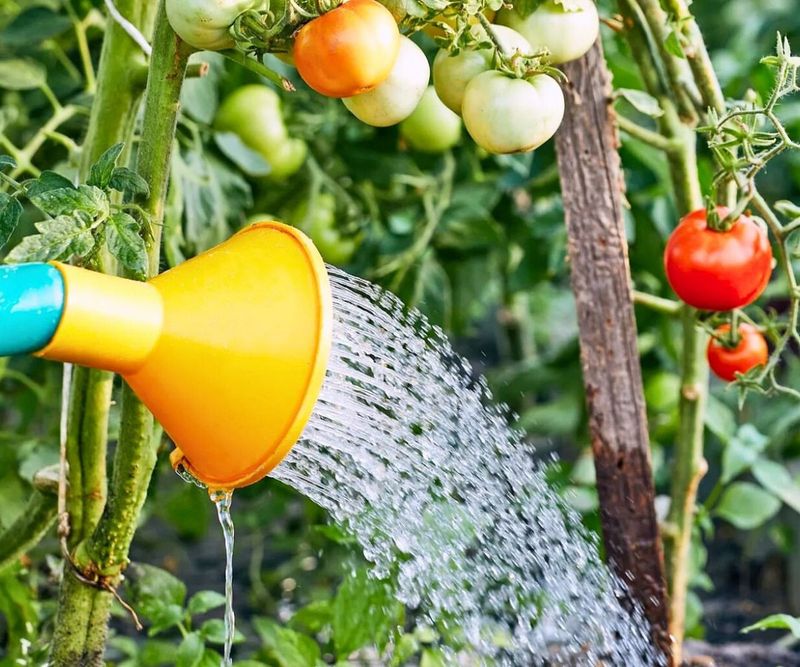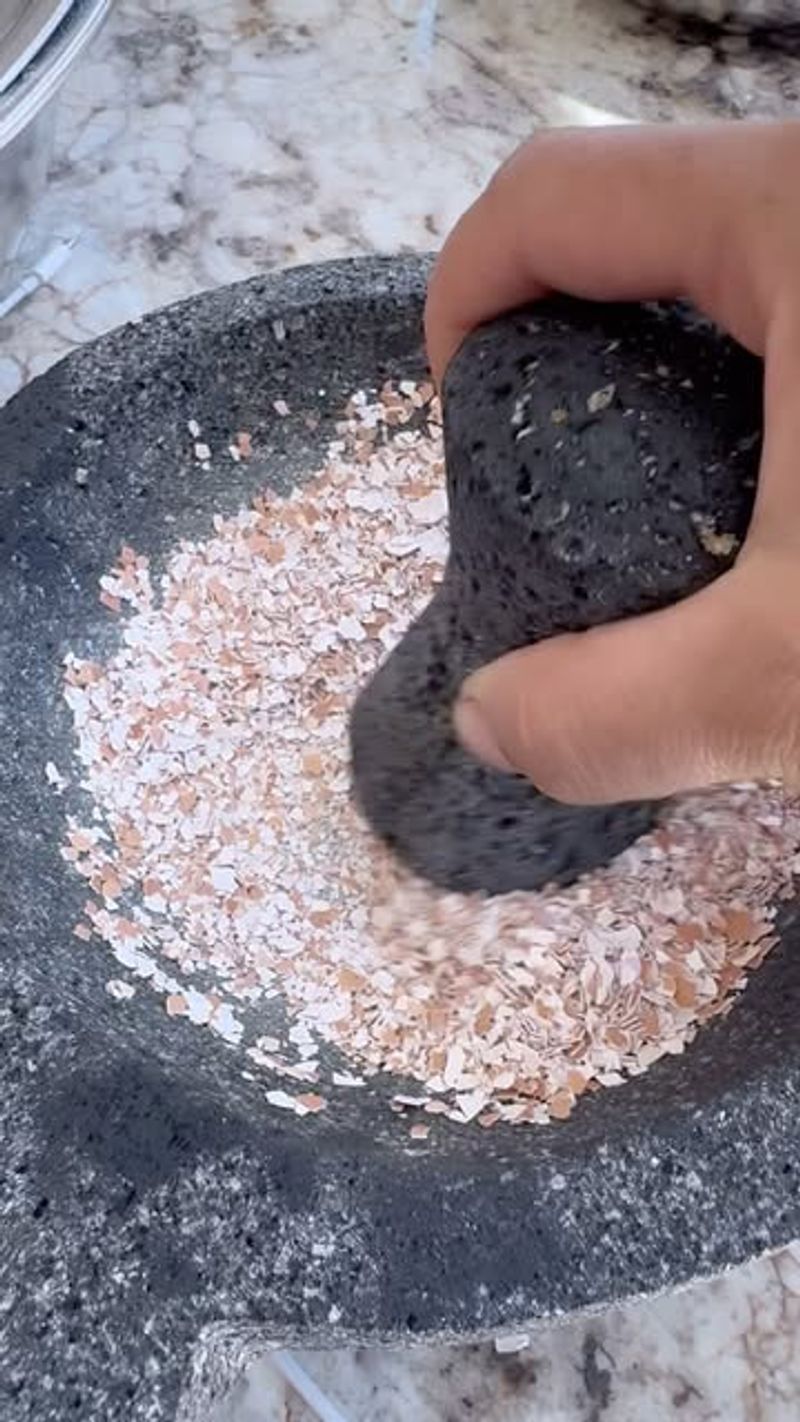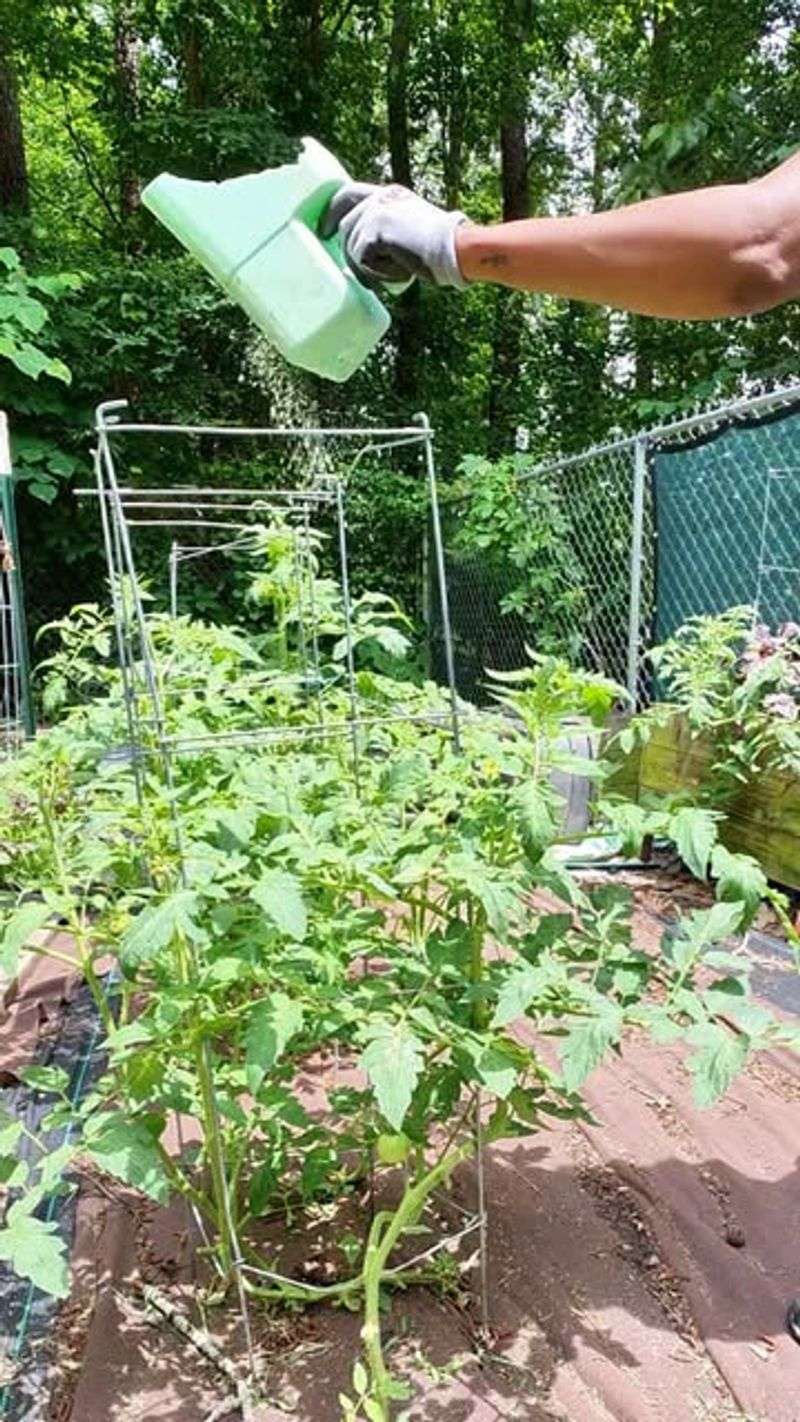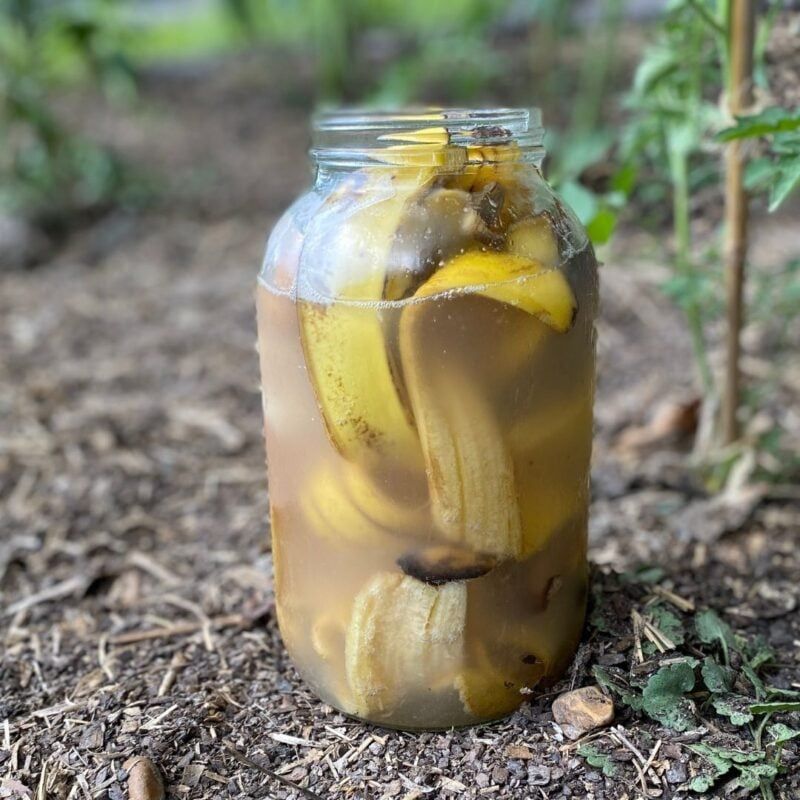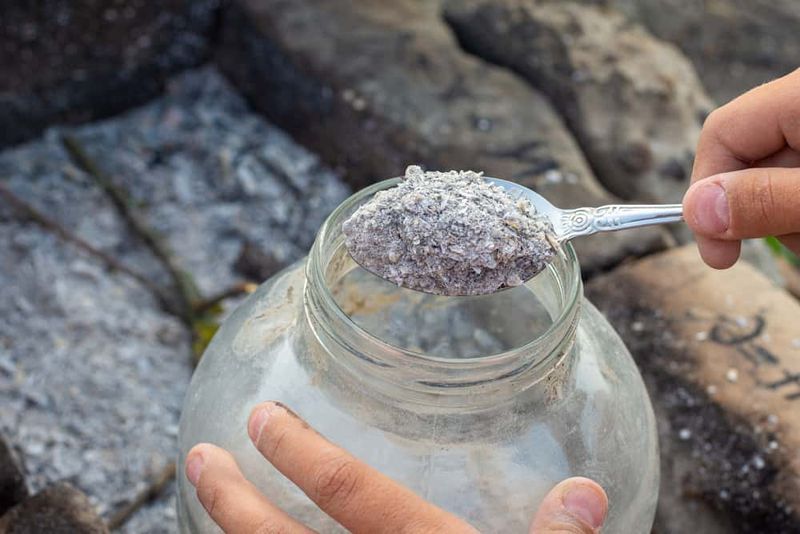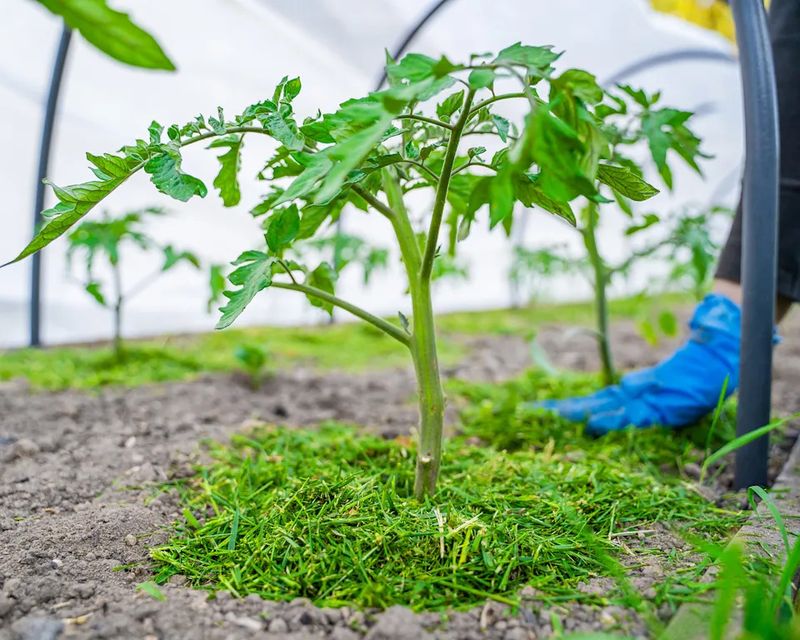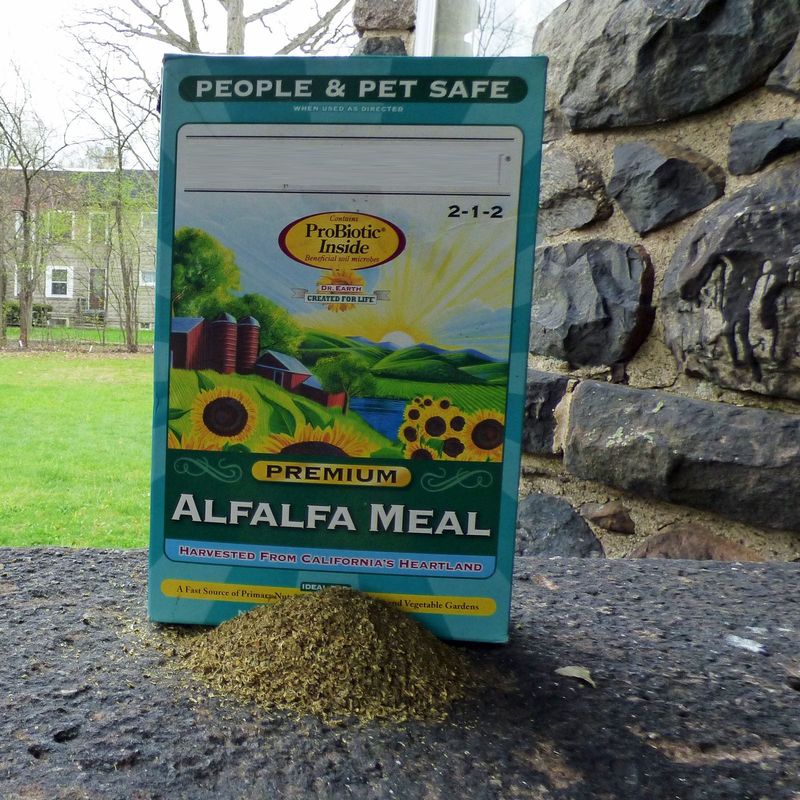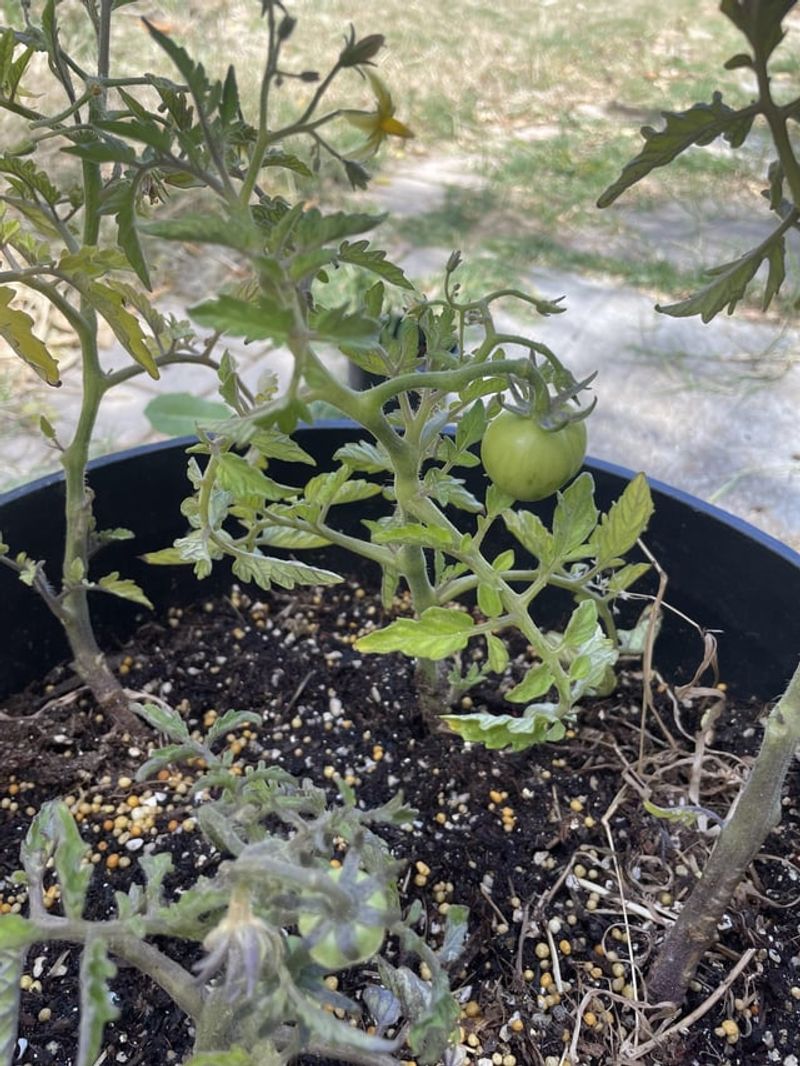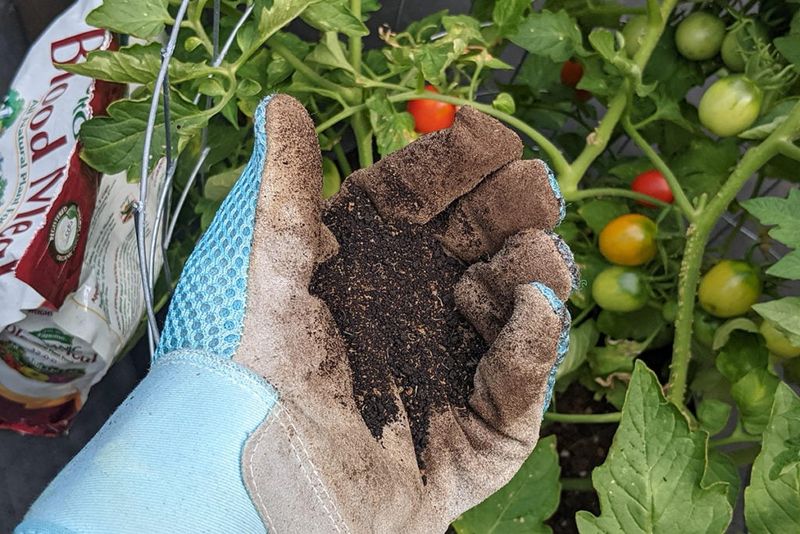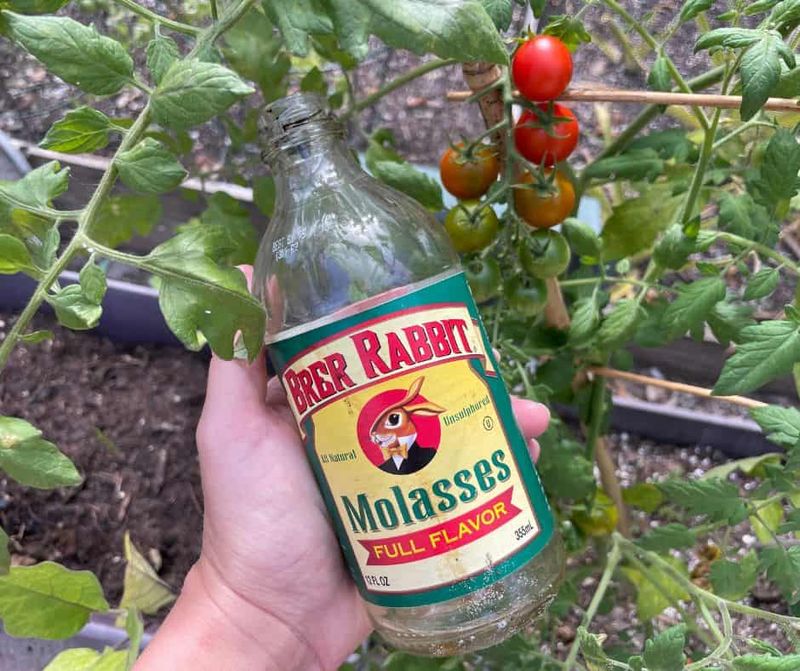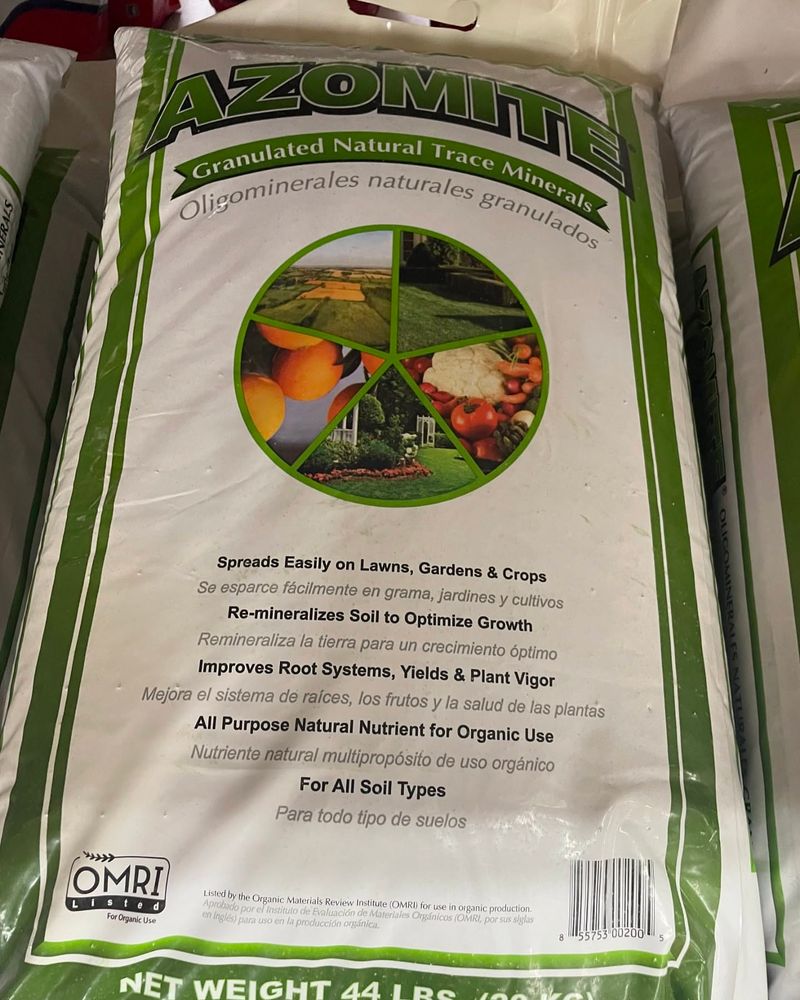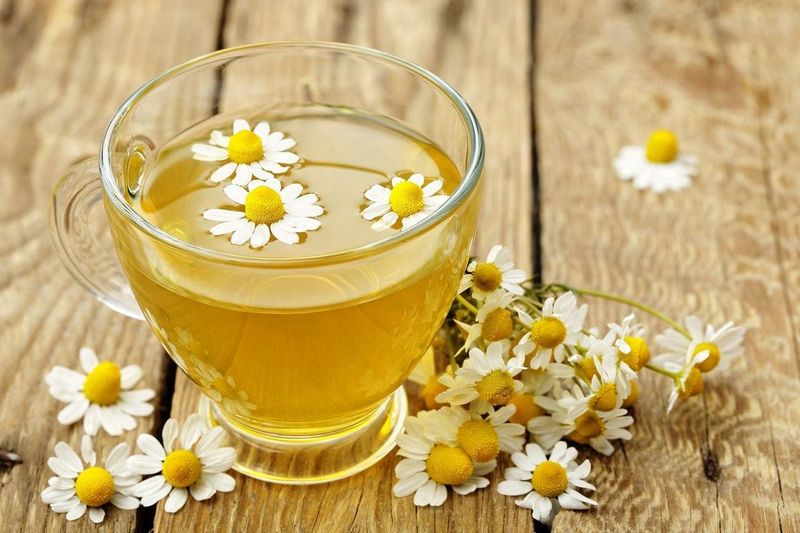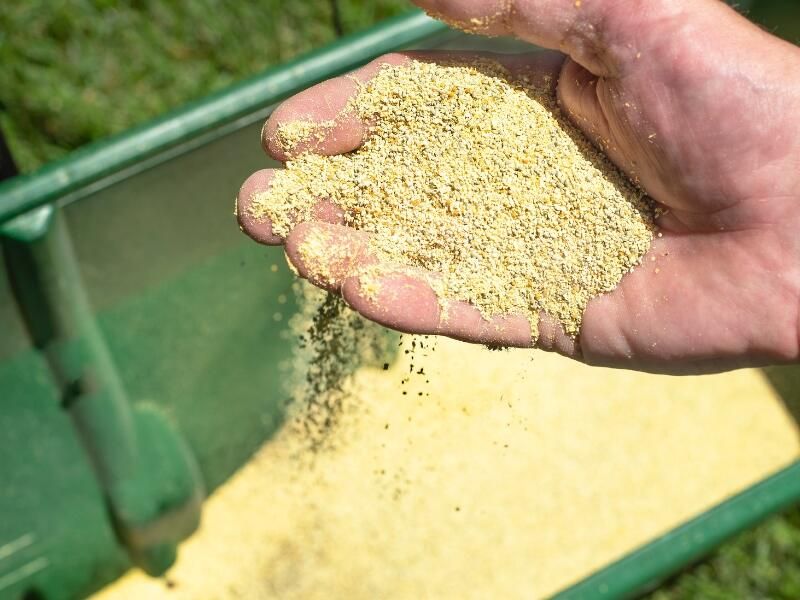Growing tomatoes that are truly mouthwatering takes more than just sunshine and a sprinkle of water. The secret? Natural, single-ingredient fertilizers that are easy to find and surprisingly powerful. With the right touch, you’ll go from so-so fruits to a harvest worth bragging about.
Crushed eggshells boost calcium, helping prevent blossom end rot. Used coffee grounds add nitrogen and improve soil texture, giving plants the lift they crave. And banana peels? They’re potassium powerhouses that encourage strong stems and vibrant fruit.
Before reaching for commercial blends, give these kitchen castoffs a shot. They’re budget-friendly, gentle on the environment, and remarkably effective. Your tomatoes—and your taste buds—will thank you for the upgrade.
1. Compost
Often called gardener’s gold, compost improves soil structure while feeding tomatoes gradually throughout the season. The diverse nutrients and beneficial microorganisms create the perfect growing environment for strong roots and healthy foliage.
Add a 2-inch layer around your plants, keeping it a few inches away from the stems. Water thoroughly after application to help nutrients begin seeping into the soil.
My tomatoes practically jumped with joy after my first compost application last summer. The difference in leaf color within just a week was remarkable – they went from pale green to that deep, healthy shade that promises a bumper crop.
2. Worm Castings
Nature’s perfect plant food contains enzymes and beneficial microbes that tomatoes absolutely love. The nutrients in worm castings release slowly, preventing the burning that can happen with stronger fertilizers while improving soil structure.
Simply sprinkle a handful around each plant monthly, gently working it into the top inch of soil. The nutrients will release each time you water, feeding your tomatoes consistently.
During a particularly challenging growing season, I switched to worm castings as a last resort for my struggling tomatoes. Within two weeks, the transformation was almost magical – new growth appeared and the existing leaves perked up dramatically.
3. Bone Meal
Rich in phosphorus and calcium, bone meal strengthens tomato cell walls and promotes impressive root development. These nutrients are essential for preventing blossom end rot and ensuring your plants produce abundant, healthy fruit.
Work about 1-2 tablespoons into the soil before planting. For established plants, sprinkle it around the base and water thoroughly to help it penetrate the soil.
The first season I used bone meal, my cherry tomatoes produced clusters so heavy they needed extra support! The fruits were remarkably firm with thicker skins that resisted cracking – a common problem in my rainy climate.
4. Epsom Salt
Magnesium sulfate addresses the yellowing leaves and stunted growth that plague many tomato plants. The magnesium boosts chlorophyll production for greener foliage, while sulfur enhances overall plant vigor and sweetens fruit.
Dissolve 1 tablespoon in a gallon of water and apply as a foliar spray every two weeks. For soil application, sprinkle 1 tablespoon around each plant monthly.
A gardening friend swore by Epsom salt for years before I tried it. Now I understand why – my plants developed noticeably thicker stems and more abundant flowers after just two applications. The flavor improvement in the tomatoes was unexpected but welcome!
5. Coffee Grounds
Slightly acidic and nitrogen-rich, used coffee grounds help maintain the soil pH that tomatoes prefer. They attract earthworms while slowly releasing nitrogen that supports lush foliage development without burning tender roots.
Sprinkle a thin layer of dried grounds around plants, then work them lightly into the soil surface. Avoid piling them thickly as they can form a water-repellent crust.
Each morning, I save grounds from my coffee pot for my tomato beds. Beyond the nutritional benefits, I’ve noticed fewer slugs around my plants – an unexpected bonus that has saved many a tomato from becoming a slimy feast!
6. Crushed Eggshells
Calcium-packed eggshells prevent blossom end rot, that dreaded black spot on tomato bottoms. The slow-releasing calcium strengthens cell walls and helps tomatoes develop properly from blossom to harvest.
Rinse, dry, and crush shells to a fine powder for fastest results. Mix a handful into the soil before planting or sprinkle around existing plants, working them into the top layer.
Since adding crushed eggshells to my garden routine three seasons ago, blossom end rot has become a distant memory. I keep a container in my kitchen where shells accumulate until garden day – simple, free, and incredibly effective.
7. Fish Emulsion
Fast-acting nitrogen from this smelly but effective fertilizer gives tomatoes a quick growth boost. The organic compounds and trace minerals support overall plant health while enhancing soil microbial activity.
Mix 1 tablespoon per gallon of water and apply directly to the soil around plants every 2-3 weeks. Early morning or evening application reduces the odor that might otherwise linger in hot sun.
The smell kept me away from fish emulsion for years until desperation with some stunted seedlings pushed me to try it. Yes, my garden smelled like a fishing dock for a day, but my tomatoes grew an astonishing 4 inches in a single week!
8. Banana Peels
Potassium-rich banana peels promote flowering and fruiting while strengthening plant stems. The slow decomposition provides a steady supply of this essential nutrient throughout the growing season.
Bury chopped peels 1-2 inches deep near plant roots, or make a tea by soaking peels in water for three days. The resulting liquid makes an excellent weekly fertilizer when diluted.
Collecting banana peels became a family project at our house last summer. My kids enjoyed the “treasure hunt” aspect, and I enjoyed watching our Roma tomatoes double in production compared to previous years. Those discarded peels became garden gold!
9. Wood Ash
Potassium and calcium from hardwood ash support fruit development and disease resistance in tomato plants. The natural alkalinity also helps balance overly acidic soils, creating better growing conditions.
Sprinkle 1/4 cup around each plant, keeping it away from stems and leaves. Water thoroughly after application to help nutrients begin moving into the soil profile.
After clearing some fallen trees, we had plenty of fireplace ash last winter. Rather than discarding it, I stored it in covered buckets until spring. The tomatoes that received this treatment produced earlier and longer than their untreated neighbors.
10. Grass Clippings
Nitrogen-packed grass clippings feed tomatoes while suppressing weeds and retaining soil moisture. The green material breaks down quickly, releasing nutrients that fuel leafy growth during the critical early season.
Apply a thin layer (about 1 inch) around plants, keeping the mulch from touching stems. Refresh monthly as the material decomposes and becomes incorporated into the soil.
The summer we installed a rain barrel coincided with my first serious use of grass clippings as mulch. The combination was remarkable – I watered half as often while my Cherokee Purples grew to the size of softballs.
11. Alfalfa Meal
Growth hormones and triacontanol in alfalfa stimulate tomato plant development remarkably well. The balanced NPK ratio and trace minerals make it nearly perfect for tomatoes at any growth stage.
Work 1-2 cups into the soil before planting or sprinkle 1/4 cup around established plants monthly. Water thoroughly after application to activate the natural growth stimulants.
A fellow gardener’s persistent recommendations finally convinced me to try alfalfa meal three seasons ago. Now it’s a staple in my garden shed – nothing else has matched its ability to produce stocky, productive plants with minimal effort on my part.
12. Seaweed Extract
Packed with micronutrients and natural growth hormones, seaweed extract strengthens tomatoes against environmental stress. The unique combination of elements improves fruit quality while boosting the plant’s natural defense systems.
Mix 1 tablespoon per gallon of water and apply as a foliar spray every two weeks. For soil application, double the concentration and water the base of plants.
During last summer’s unexpected heat wave, my seaweed-treated tomatoes remained productive while neighbors’ plants stopped setting fruit. The difference was so striking that several gardening friends now keep bottles of seaweed extract in their garden supplies.
13. Blood Meal
High-nitrogen blood meal delivers a powerful growth boost to lagging tomato plants. The quick-release nitrogen supports rapid leaf development, which ultimately leads to better fruit production through increased photosynthesis.
Apply 1 tablespoon per plant, working it gently into the soil surface. Water thoroughly and repeat monthly during the growing season for continuous feeding.
When my tomato seedlings emerged pale and weak one spring, blood meal transformed them within a week. The deep green color returned to the leaves, and the plants took off with remarkable vigor. Just remember – a little goes a long way!
14. Molasses
Carbohydrates in molasses feed beneficial soil microbes that support tomato health from the roots up. The trace minerals and natural sugars create a thriving soil ecosystem that improves nutrient availability.
Mix 1-2 tablespoons in a gallon of water and apply monthly around plant bases. For foliar feeding, dilute to 1 tablespoon per gallon and spray leaves in early morning.
Skepticism filled my mind when a veteran gardener suggested molasses as fertilizer. But after seeing my soil transform from compacted clay to crumbly loam over a season of applications, I’m convinced. The earthworm population explosion was an unexpected bonus!
15. Azomite
Volcanic dust containing over 70 trace minerals gives tomatoes elements often missing in depleted garden soils. The broad mineral profile supports complex plant functions that lead to improved flavor and nutrient density in fruits.
Work 1-2 cups per 10 square feet into soil before planting. For existing plants, sprinkle 2 tablespoons around each one and water thoroughly to help minerals begin integrating with soil.
After years of gardening in the same beds, my tomatoes started lacking flavor despite looking healthy. Azomite changed everything – the mineral complexity it added brought back that homegrown taste that makes growing your own worthwhile.
16. Chamomile Tea
Natural antifungal compounds in chamomile tea help prevent damping off and other fungal problems in tomatoes. The gentle nutrients support seedling development while protecting against common diseases.
Brew strong tea using 4 bags per quart of water, cool completely, and use as a weekly soil drench or foliar spray. For seedlings, water with diluted tea (1:1 with water) at every other watering.
Losing half my seedlings to fungal issues one spring led me to try chamomile tea out of desperation. Not only did the remaining plants survive, but they thrived with a vigor I hadn’t seen before. Now it’s part of my regular seedling care routine.
17. Corn Gluten Meal
Slow-release nitrogen from corn gluten meal feeds tomatoes while suppressing weed growth around plants. The natural proteins break down gradually, providing steady nutrition throughout the growing season.
Apply 20 pounds per 1,000 square feet as a pre-emergent weed control, or use 1 cup around each established tomato plant as fertilizer. Water lightly after application.
The dual-purpose nature of corn gluten meal made me a convert after just one season. My tomato patch stayed remarkably weed-free while the plants themselves grew robust and productive. The time saved on weeding alone made it worthwhile!

